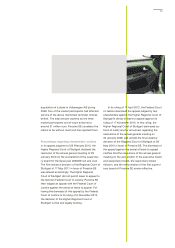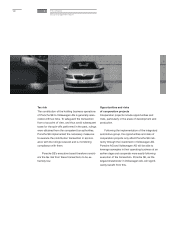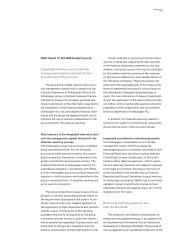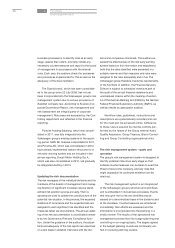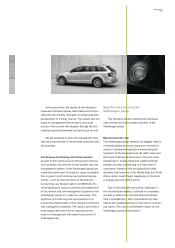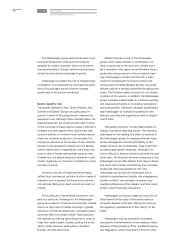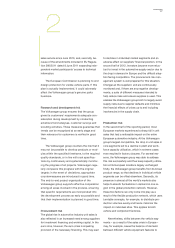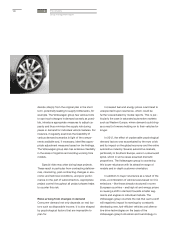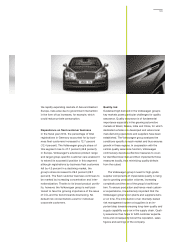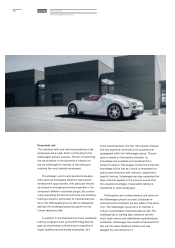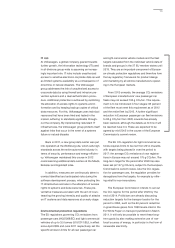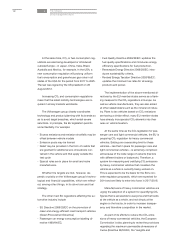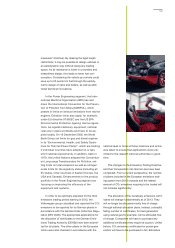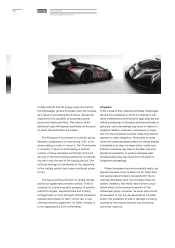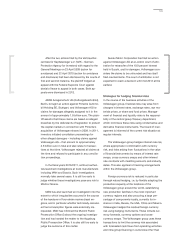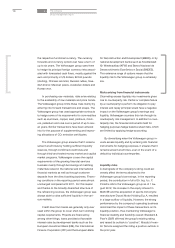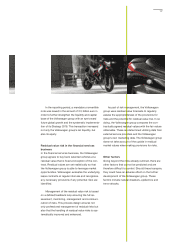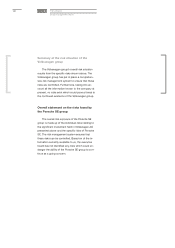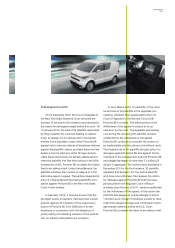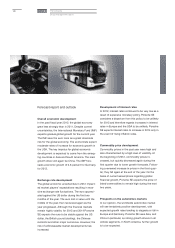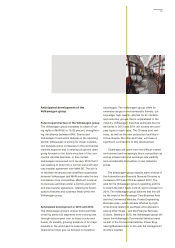Porsche 2012 Annual Report Download - page 135
Download and view the complete annual report
Please find page 135 of the 2012 Porsche annual report below. You can navigate through the pages in the report by either clicking on the pages listed below, or by using the keyword search tool below to find specific information within the annual report.
IT risk
At Volkswagen, a global company geared towards
further growth, the information technology (IT) used
in all divisions group-wide is assuming an increas-
ingly important role. IT risks include unauthorized
access to sensitive electronic corporate data as well
as limited systems availability as a consequence of
downtime or natural disasters. The Volkswagen
group addresses the risk of unauthorized access to
corporate data by using firewall and intrusion pre-
vention systems and a dual authentication proce-
dure. Additional protection is achieved by restricting
the allocation of access rights to systems and in-
formation and by keeping backup copies of critical
data resources. For this, Volkswagen uses technical
resources that have been tried and tested in the
market, adhering to standards applicable through-
out the company. By implementing redundant IT
infrastructures, the Volkswagen group protects itself
against risks that occur in the event of a systems
failure or natural disaster.
Back in 2011, a new group data center was put
into operation at the Wolfsburg site, which sets high
standards across the entire automotive industry in
terms of security, performance and energy efficien-
cy. Volkswagen maintained this course in 2012
commissioning additional data centers at the Mladá
Boleslav and Ingolstadt sites.
In addition, measures are continuously taken to
combat identified and anticipated risks during the
software development process, when protecting the
IT infrastructure and also in the allocation of access
rights to systems and data resources. These pre-
ventative measures are taken with the aim of coun-
teracting the growing intensity and quality of attacks
on IT systems and data resources at an early stage.
Environmental protection regulations
The EU regulations governing CO2 emissions from
passenger cars (443/2009/EC) and light commercial
vehicles of up to 3.5 tonnes (510/2011/EU), in effect
since April 2009 and June 2011 respectively, set the
specific emission limits for all new passenger car
and light commercial vehicle models and the fleet
targets calculated from the individual vehicle data of
brands and groups in the 27 EU member states until
2019. They are an important component of Europe-
an climate protection regulations and therefore form
the key regulatory framework for product design
and marketing by all vehicle manufacturers operat-
ing in the European markets.
From 2012 onwards, the average CO2 emissions
of European manufacturers’ new passenger car
fleets may not exceed 130 g CO2/km. This require-
ment is to be introduced in four stages: 65 percent
of the fleet must meet this requirement as of 2012
and the entire fleet by 2015. A further significant
reduction in European passenger car fleet emissions
to 95 g CO2/km from 2020 onwards has already
been resolved, although the details as to how it will
be reached have not. These are expected to be
agreed by mid-2013 in the course of the European
Commission’s current review.
The EU CO2 regulation for light commercial ve-
hicles requires limits to be met from 2014 onwards,
with targets being phased in over the period to
2017: the average CO2 emissions of new registra-
tions in Europe may not exceed 175 g CO2/km. The
long-term target for the period after 2020 has also
been set (at 147 g CO2/km), subject to the European
Commission’s current review. Like the CO2 regula-
tion for passenger cars, the regulation provides for
derogations from the targets, for example by offer-
ing relief for eco-innovations.
The European Commission intends to set out
the CO2 regime for the period after 2020 by the
end of 2014. Politicians are already discussing
reduction targets for the transport sector for the
period to 2050, such as the 60 percent reduction
in greenhouse gases from 1990 levels cited in the
EU White Paper on transport published in March
2011. It will only be possible to meet these long-
term goals by also making extensive use of non-
fossil sources of energy, in particular in the form of
renewable electricity.
131


